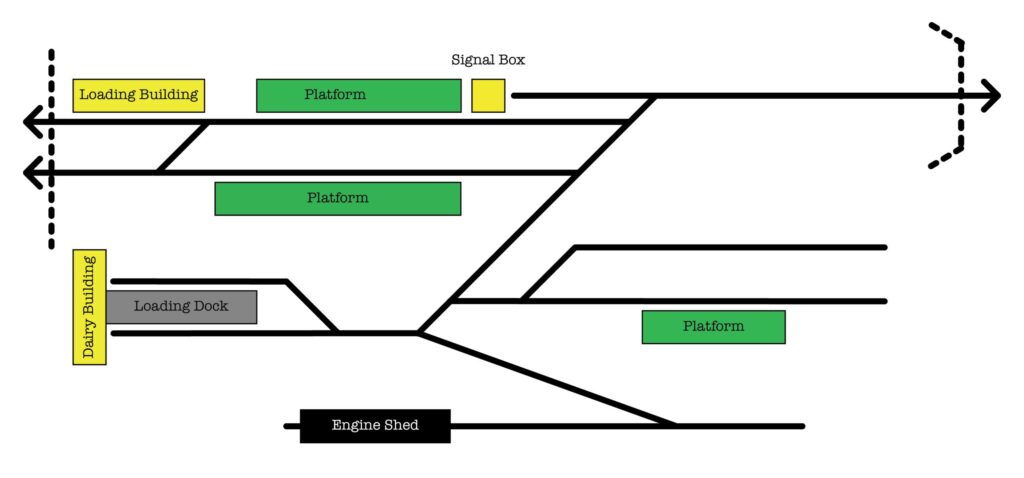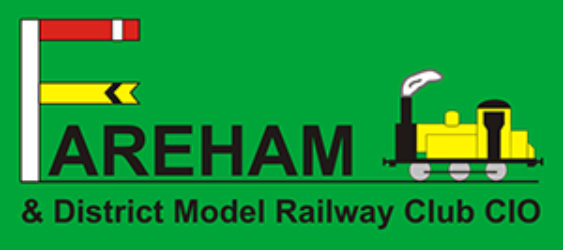Article 1:
Introduction
In this series of three articles we are going to discus designing layouts, more advanced items to consider and layouts that you could use for inspiration each article focuses on on a specific element and is designed for you to read in just a few minutes to give you some drive to begin your project.
Creating a model railway layout is a captivating hobby that combines creativity, engineering, and a love for trains. The allure of designing a miniature world, where every detail from the track layout to the smallest element of scenery can be controlled and customised, is a significant part of what makes model railroading so enchanting. Whether you’re a seasoned enthusiast or a newcomer to model railways, designing and building your own layout can be challenging and rewarding.
In this article, we’ll journey through the fundamental aspects of model railway design. We’ll explore a variety of layout plans that cater to different space constraints and preferences, complete with layout diagrams to spark your imagination. You’ll learn valuable tips for efficiently utilising your available space, ensuring that even the smallest area can be transformed into a bustling railway scene. Additionally, we’ll delve into the art of incorporating realistic features into your layout, such as lifelike scenery, detailed buildings, and authentic rolling stock, all of which add to the immersive experience of your model railway.
This guide will help to inspire and assist you in creating a model railway that reflects your vision and passion. From initial planning to the final touches, we’ll provide you with the knowledge and ideas needed to bring your miniature railway to life. Whether you aim to recreate a specific historical era, depict a bustling urban environment, or capture the tranquillity of a rural landscape, the tips and techniques discussed here will help you achieve your goals.
Join us as we uncover the secrets to creating stunning model railway layouts. We offer insights that will elevate your modeling skills and bring your railway dreams to fruition. Let’s start this exciting adventure into the world of model railroading!
Layout Planning and Design
1. Understanding Your Space
Before diving into the design, evaluate the space available for your model railway. Consider the following factors:
- Room Dimensions: Measure the space’s length, width, and height.
- Accessibility: Ensure you can easily access all parts of the layout for maintenance and operation.
- Lighting and Power: Plan for adequate lighting and power outlets.
2. Choosing a Scale and Gauge
The scale (the proportion of the model to the real thing) and gauge (the distance between the rails) are crucial decisions:
- HO Scale (1:87): Popular and versatile, suitable for detailed layouts.
- N Scale (1:160): Ideal for limited space, allowing for larger layouts in smaller areas.
- O Scale (1:48): Larger scale, great for detail, but requires more space.
3. Developing a Track Plan
A well-thought-out track plan is the backbone of any model railway:
- Continuous Loop: Perfect for beginners, offering simple operation and constant running.
- Point-to-Point: More realistic operations with a defined start and end point.
- Switching Layout: Focuses on industrial or yard operations, ideal for small spaces.
Sample Layout Diagram
Below we have provided an example of one of our own track diagrams Fairhaven Town. This gives you an idea of the kind of basic items that you should include on your diagram such as buildings turnouts tunnels and so on.
By doing this, it will give you a good idea of what you might be able to include in the space you have on your board.

Efficient Use of Space
1. Multi-Level Layouts
Maximize vertical space by incorporating multi-level layouts. Use helixes or ramps to connect different levels, allowing for longer runs and more scenery.
2. Modular Layouts
Consider modular designs that can be expanded or reconfigured. This approach is handy for those with limited space or who may move in the future.
3. Fold-Up or Portable Layouts
For those with minimal space, fold-up or portable layouts provide a practical solution. These can be stored away when not in use and set up quickly.
Incorporating Realistic Features
1. Scenery and Landscaping
Creating realistic scenery enhances the overall appearance of your layout:
- Terrain: Use foam, plaster, or paper mache to create hills, mountains, and valleys.
- Vegetation: Trees, bushes, and grass can be made from a variety of materials, including commercial products and natural items like twigs and moss.
- Water Features: Realistic rivers, lakes, and waterfalls can be created using resin or other water-simulation products.
2. Buildings and Structures
Adding buildings and structures brings life to your layout:
- Scratch-Built: Custom buildings made from basic materials provide a unique touch.
- Kits: Pre-fabricated kits are available in various styles and levels of complexity.
- Detailing: Add small details like signage, weathering, and interior lighting to enhance realism.
3. Rolling Stock and Locomotives
Ensure your trains fit the era and location you’re modelling:
- Weathering: Use paint and powders to simulate dirt, rust, and wear.
- Detailing: Add small details like figures, cargo, and decals to rolling stock and locomotives.
Tips for Beginners
1. Start Small
Begin with a simple layout and expand as your skills and confidence grow. A small project is less overwhelming and allows you to focus on learning the basics.
2. Learn from Others
Join model railway clubs, attend exhibitions, and participate in online forums. The community is a valuable resource for advice, inspiration, and support. If you want to learn more about joining our Fareham Model Railway Club, you can follow This Link to post an enquiry.
3. Have Patience
Building a model railway takes time and effort. Enjoy the process, and don’t rush. Each step, from planning to construction, is part of the rewarding journey.
Conclusion
Designing and building a model railway layout is a fulfilling hobby that offers endless possibilities for creativity and enjoyment. By carefully planning your layout, efficiently using space, and incorporating realistic features, you can create a miniature world that captures the magic of railways. The next articles will delve deeper into specific layout ideas, advanced techniques, and more tips to elevate your model railway to the next level. Happy modelling!
Stay Tuned More Articles On This Are Coming Soon
- Article 2: Advanced Techniques for Model Railway Layouts
- Article 3: Showcasing Inspiring Model Railway Designs from Around the World
Other Resources:
- Model Railroader Magazine
- National Model Railroad Association
- Online Forums and Communities: Model Train Forum, TrainBoard, RMweb

